While many students really shine in small group settings, it’s not without its challenges. Have you ever noticed how some students might behave differently in small groups than in whole group sessions? Well, you’re not alone! This post shares tips and strategies for managing and engaging students during small group instruction, specifically in reading groups.

1. Set Clear Expectations
Before anything else, make sure you establish and communicate clear expectations for your students. From the moment they join the group to when they leave and everything in between, they should know what’s expected of them.
The rest of this post will discuss more specific tips and strategies that can help you develop your own expectations and procedures. Whatever you decide to do, definitely be clear and explicit with students.
Tip: Post the procedures and expectations and number them. Then if the students aren’t following expectations, you can just point to the chart and say, “Number two,” or “Number three.” That way, you’re not lecturing or wasting instruction time. Instead, you’re putting that responsibility back on the students to follow those expectations.
Here are some example expectations you might have. I recommend choosing 3-5 of the most important ones.
2. Engage Immediately
The moment your students sit down at your small group table, they should have something to do immediately. You may want to use a specific warmup or reading activity to get your students started.
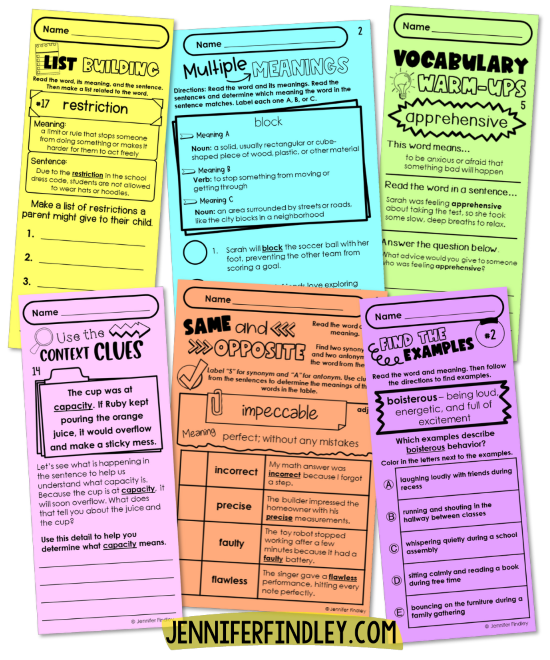
Or you may want to choose a specific activity or task that isn’t dependent on you. In my experience, it’s always best to have some type of activity that they can do with or without you prepping the materials ahead of time. For instance, I had my students bring their independent reading book and read wherever they were at in their books. This procedure kept them engaged and also gave me time to gather my materials and make sure that the rest of the class was on track and doing what they were supposed to be doing.
3. Use Partner Discussions
Even in small groups, some students might hesitate to speak up. To ensure everyone has a voice and keep students engaged, I recommend using a lot of partner discussions even within small group. This ensures everyone gets a chance to share thoughts before the group discussion kicks off.
Here are some quick tips for this:
- Either assign students partners or have it always be the person beside them. Either way, make it very clear who their partner is for discussion.
- Have an odd number of students? Let that student be your partner. More than likely, they will love this!
- Teach and model expectations for partner discussions.
4. Balancing Teacher-Student Talk Time
This next tip goes right along with the previous one. You want to ensure that you are not dominating the discussion and that students are having plenty of opportunities to discuss the text. A great way to do this is with questioning techniques and the partner discussion tip previously shared.
5. Silent Signals
Establish a clear method for students to signal they’re done or ready for the next task. For instance, if you have students reading a text and want them to show you when they are done, have them use a silent signal or gesture. For example, I had students place their thumb up on the table. This quickly allowed me to see that they were finished and ready to move on.
I would also give them a task to do when they were finished and waiting. I kept it very simple and had students reread for fluency while waiting for the rest of the class to finish. This worked well because:
- the thumbs up on the table gave the students something to do
- the act of putting the thumb on the table reminded them of the expectation that they need to reread for fluency
- this allowed me to keep track of when the group is finished reading and ready to discuss the text
6. Be Specific about Materials
Make sure that you explicitly teach what materials need to be brought to your small group reading.
For my students, they were expected to bring their independent book, which went along with the task they were expected to do right away (from Tip #2). They would also have their reading notebooks. While we often didn’t use the notebook, it was an expectation that they have it just in case. They also needed to have a pencil.
Tip: I always kept golf pencils or similar small pencils on hand. This eliminated concerns over students not having a pencil. Simply handing them one made sure that we maximized our small group time.
7. Interest-Based Texts and Student Choice
Whenever possible, incorporate texts, passages, and books that are engaging to your students. Also look for opportunities to give students choice.
Here are some ways to make this happen:
- Choose non-fiction topics that are engaging to students.
- Read stories or books that are specific genres that students find engaging and interesting, like science fiction.
- Allow students to choose from topics, genres, or stories whenever possible. For example, present 2-4 options and allow the group to vote.
- Give students choice on the responses or activities they complete. This works well for extension activities after the main instruction has been completed.
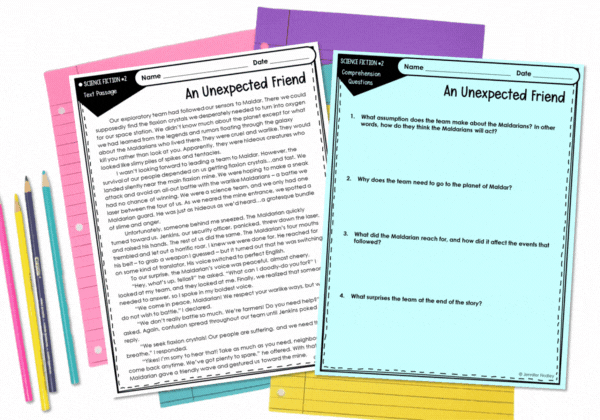
8. Mix Things Up
Small group instruction doesn’t always have to be a lesson with a passage or book. This is especially useful during short weeks or days leading up to a holiday or field trip.
Here are some ideas to mix up small group instruction while still having it be effective and meeting an objective:
- Have students read task cards aligned to the skill they are practicing or reviewing.
- Have students play games with partners during your small group while you monitor and provide corrective feedback as needed. These can be games with texts or games with words.
- Get students ready to play a game by reading and discussing the text as a group. Then have students “play” a game with questions from the text after your group (or on the following day).
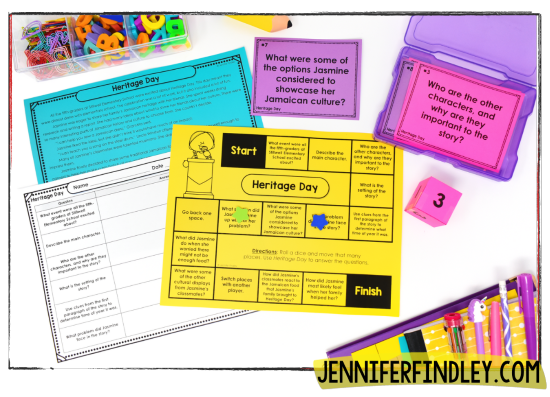
9. Consider Positive Reinforcements
With some student groups, it may be necessary to introduce positive reinforcements. Although I rarely had to do this because the strategies I shared naturally maintained student engagement and motivation, there might be instances where additional positive reinforcement is needed for certain classes or groups.
This can be as simple as table points, where students earn points for specific actions. By the end of the week, if they have enough points, they could be rewarded. The reward could be as simple as choosing a sticker or pencil – something easy for you to manage and implement.
Want Small Group Reading Lessons?
To get the FREE ready-to-use small group reading lessons for grades 4-5, click here or on the GIF shown below. You will be redirected to a new page where you can enter your email for instant access to done-for-you small group reading lessons.
Want Small Group Reading Resources and Ready-Made Lessons?
For skill-focused small group reading instruction, check out these resources:
Shop This Post
For word-recognition focused small group reading instruction (decoding or morphology), check out these resources:
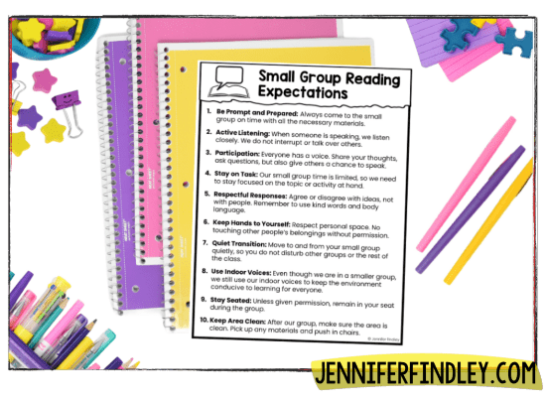
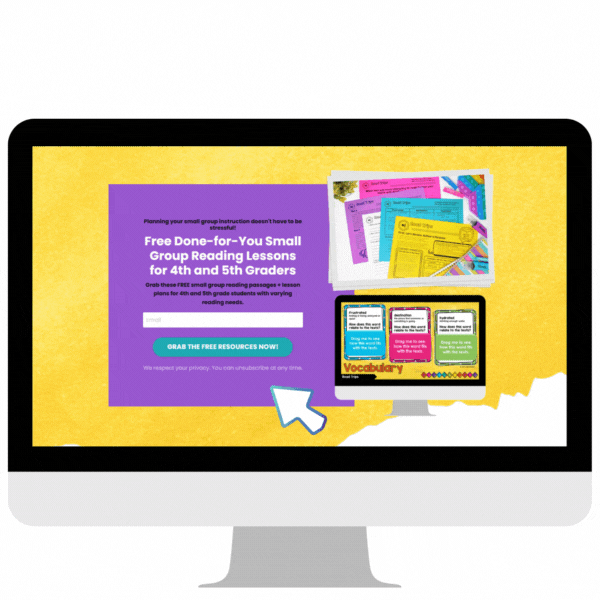
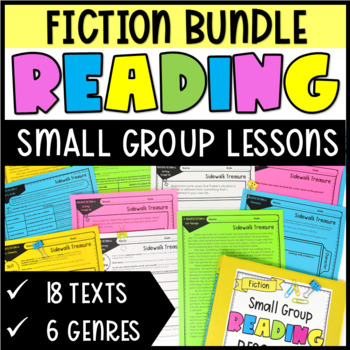
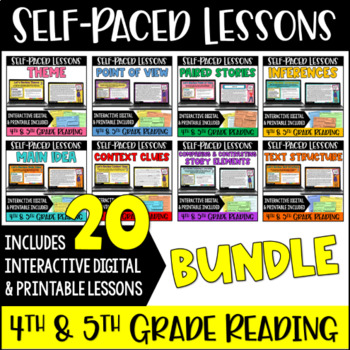









Leave a Comment